Updated: 02-Jul-2020
The Lockheed Aircraft Company has always had aircraft construction as its main activity, and its other activity of manufacturing engines and propulsion means is very little known.
-Lockheed had as a piston-engine subsidiary "Menasco", known as the "Menasco Manufacturing Company".
-Menasco was founded in 1926 and later became Lockheed.
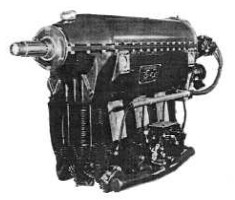
“C-4 Pirate”
-Two lines of piston engines stand out, the "Pirate" and the "Bucaneer", with the corresponding "Super Pirate" and the "Super Bucaneer".
-The top scoring engine was the "Unitwin" consisting of two coupled C6S-4 models that could be declutched. It delivered 580 hp.
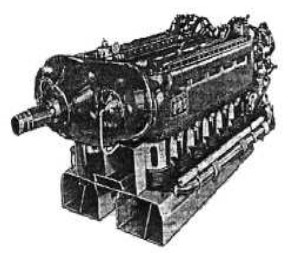
“Unitwin”
-In the beginning, Menasco also built the Salmson radial engine under license.
-Very little known is Lockheed's pioneer jet-engine activity. Already in 1940, they began designing the L-1000 to be installed on the Canard-Lockheed L-133 fighter plane with jet propulsion.
-The project was due to N.C. Price, expert in steam turbines. In 1933 a Travel Air flew with this system.
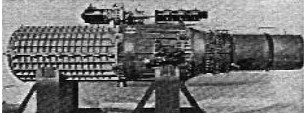
“L-4000”
-The L-1000 gave 5,500 lbf of thrust. With the support received from 1943, Lockheed continues with turbojet projects, up to the L-4000, designated XJ-37-4.
-The L-1000 was officially the XJ-37-1. The XJ-35 was the L-1000 turboprop version.
-In 1945-46 Lockheed transferred the works to Menasco - its Engine Division -, but soon the project was passed to Wright, who finished the works in 1952.
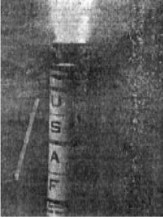
“LPC-156 test”
-Another hardly known aspect is the construction of rocket engines for SRAM ballistic missiles through another Division, LPC, or Lockheed Propulsion Company.
-For example, they made the SR-13 (Solid Rocket-13) or the SR-75 on SRAM AGM-69. And many more.
-This Division was previously the "Grand Central Rocket Company", founded in 1952 and specialized in solid fuel rocket engines.
-In 1961 it became entirely Lockheed.
-The one in the previous illustration is a solid rocket in an inverted position to measure the thrust.
-It is the LPC 156 with 156 inches in diameter. It gave over 900,000 lbf of thrust.
-The best known LPC engines of the 1960’s were:
-The “Sword” giving 4,000 lbf of thrust.
-The “Viper IC” giving 5,400 lbf of thrust and the “Viper IIC” delivering 8,000 lbf of thrust.
-The “Lance II” giving 28,000 lbf.
-The Apollo engines giving 155,000 lbf.
-Various engines have been built with fuels as exotic as Polysulfide/Amonium Perchlorate.
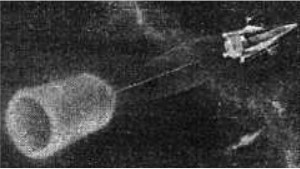
“Ionic propulsion”
There have been other interesting works on other propulsion systems like Ionic motors, to travel to deep space.
-Fully imaginary but original project since the nuclear reactor is 1600 meters behind the vehicle that has the ionic motors.
From Appendix 6: We received new photos of the L-1000 engine that is mentioned in the main text but could not be shown at the time.


"The L-1000 front and rear view"
-The L-1000 model was officially the XJ-37-1, and the L-4000 was the XJ-37-4.
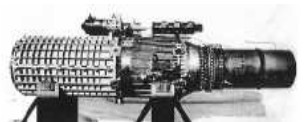
"Another view of the L-1000"
-New photograph of a Lockheed turbojet, model L-1000, which also appears in the main text.
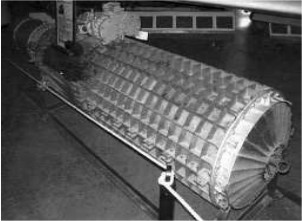
“Lockheed L-1000”
-It is located at the "Planes of the Fame" Museum, in Chino, California.
-Lockheed also made rocket engines for missile propulsion, such as the solid fuel XSR13-LP-1 for the Hughes AIM-47 Falcon's air-to-air missiles.

“Falcon with Lockheed engine”
Other Lockheed experiments were supersonic inspection and photography sounders, like the one shown below reaching a speed of 1,500 miles per hour.

“Lockheed supersonic sounder”
-Teaming up with Northrop Grumman and Energy they have developed the CEV or “Crew Exploration Vehicle”.

“CEV Lockheed/Northrop-Grumman”
-The CEV is divided into three parts: Crew Module, Service Module and engine.
-This one has fuel tanks and two liquid rocket engines.
Engines of LOCKHEED
Model: AGM-59 , rocket engine
Arquitecture:
Chambers:
Fuels:
Feed System:
Ignition:
Thrust:
Weight:
Model: Apollo, 155,000 lbf
Arquitecture:
Chambers:
Fuels:
Feed System:
Ignition:
Thrust:
Weight:
Model: L-1000 (XJ-37) turbojet
Arquitecture: Turbojet
Compressor/s:
Combustion chambers:
Turbines:
Power / Thrust: --- / 5500 Lbf
Weight:
Model: L-4000 (XJ-37-4) turbojet
Arquitecture: Turbojet
Compressor/s:
Combustion chambers:
Turbines:
Power / Thrust:
Weight:
Model: Lance II, 28000 lbf
Arquitecture:
Chambers:
Fuels:
Feed System:
Ignition:
Thrust:
Weight:
Model: Lockheed XJ-35, turboprop
Arquitecture: Turboprop
Compressor/s:
Combustion chambers:
Turbines:
Power / Thrust:
Weight:
Model: LPC (from Lockheed Propulsion Div.)
Arquitecture:
Compressor/s:
Combustion chambers:
Turbines:
Power / Thrust: / ---
Weight:
Model: LPC-156, rocket engine
Arquitecture:
Chambers:
Fuels:
Feed System:
Ignition:
Thrust:
Weight:
Model: SR-13 (XSR-13-LP-1)
Arquitecture:
Chambers:
Fuels:
Feed System:
Ignition:
Thrust:
Weight:
Model: SR-75
Arquitecture:
Chambers:
Fuels:
Feed System:
Ignition:
Thrust:
Weight:
Model: SRAM
Arquitecture:
Chambers:
Fuels:
Feed System:
Ignition:
Thrust:
Weight:


